A recent comment on the Facebook page indicated that the particular poster could not understand why anyone would want to wear something that made their behind big. Mind you, this was on a photo post of a Regency gown.
My mind went immediately to my love of dresses from the 1870s and the popular “I like big butts and I cannot lie” phrase we costumers have taken up recently to support the grand Bustle Era silhouettes.
Then I thought more of it. As I raced through each decade of the 1800s, it occurred to me that pretty much all fashion from the Regency to Late Victorian has some sort of emphasis on the back side. Let me show you…
Regency
Here, although we have an overall slender shape, the skirts are still decidedly gathered toward the center back. Even a small sausage-shaped pad was added underneath to help support the skirt and it’s rounding out from the middle of the back.
Romantic Era – 1820s & 30s
As we move forward, the skirt shape changes to more gored panels and the skirts widen.
BUT you can see there is still a trend to keep full gathers at the center back, only this time the waistline is actually at the waist and not above it. Pads were used to help fill out the sway of the lower back to support the skirt. See?… adding to that Big Butt theory.
Early Victorian – 1840s
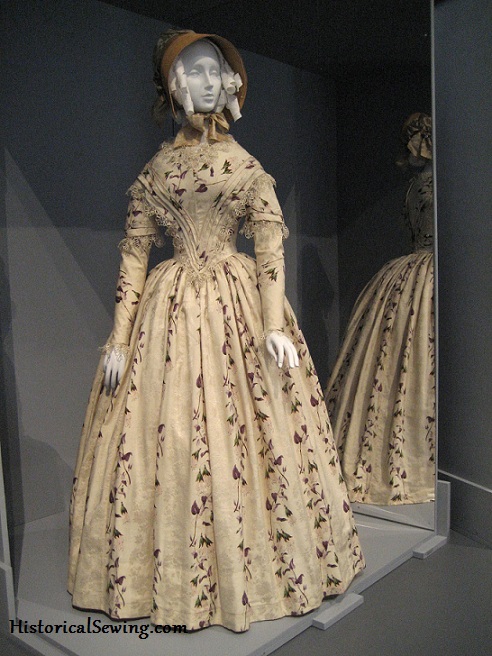
Continuing along the same lines as the previous decade, the skirts are full and mostly deep pleated around the waist.
But here it is again – padding the back side with more fabric gathered into the small of the back.
Mid-Victorian – 1850s & 60s
Ok… so I guess the 1850s don’t go so far into adding to back width. Skirts are fairly round and pleated evenly around the waist.
But then comes the elliptical hoop of the 1860s….
Well, the butt happens to be hidden from any curved silhouette, but the emphasis on the swing of the skirt to the back HAS to count for adding girth to the body back there! Right?
Bustle Era – 1870s & 80s
Now the epitome of what it means to “like Big Butts.” I think bustle dresses are the most beautiful dresses of the 19th Century! And who cares if the skirt drags out behind, enlarging the back side into swirls of taffeta and ribbons.
Let’s not talk about how wonderful this silhouette is for those of us naturally endowed with a bit extra on our hips… The designs create a wonderful feminine image.
Late Victorian – 1890s
We’ve reached the last decade of Victorian dress. This is pure hourglass shaping! BUT… can you see that even with gored skirts and tiny waists you still find a concentration of excess fabric gathered into the center back waist?
I think our theory has been proved… Big Butts rule the 1800s! If you love the fashion – either making it or wearing it, or simply studying it, and if you don’t like wide behinds, you won’t enjoy all the delicious treats of 19th C. clothing. 🙂
Have you ever thought of the strong similarities in back emphasis on clothing throughout the 19th Century? Interesting, huh?


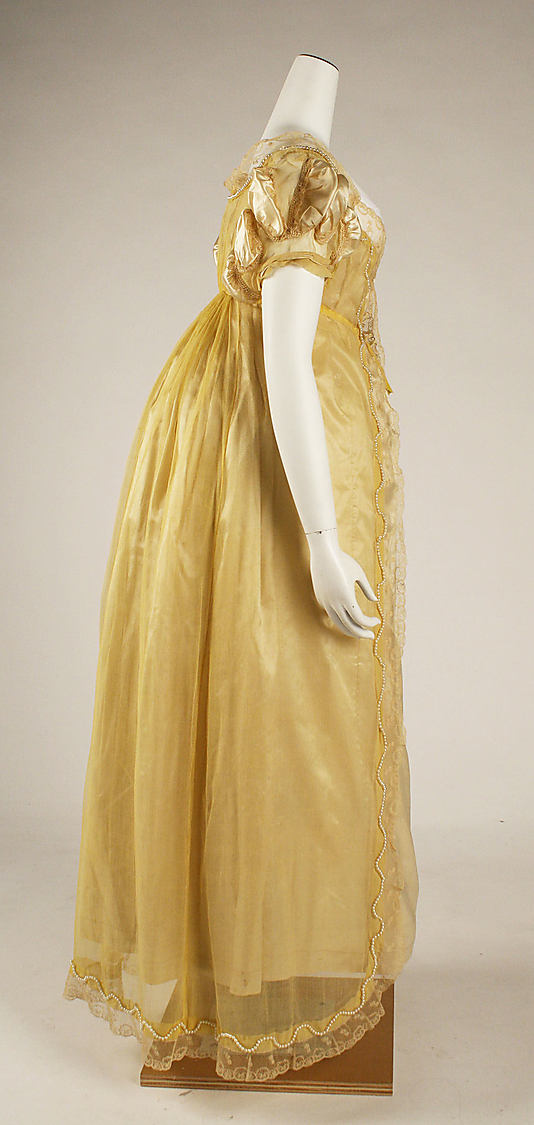
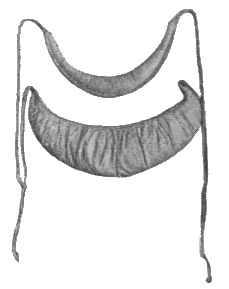


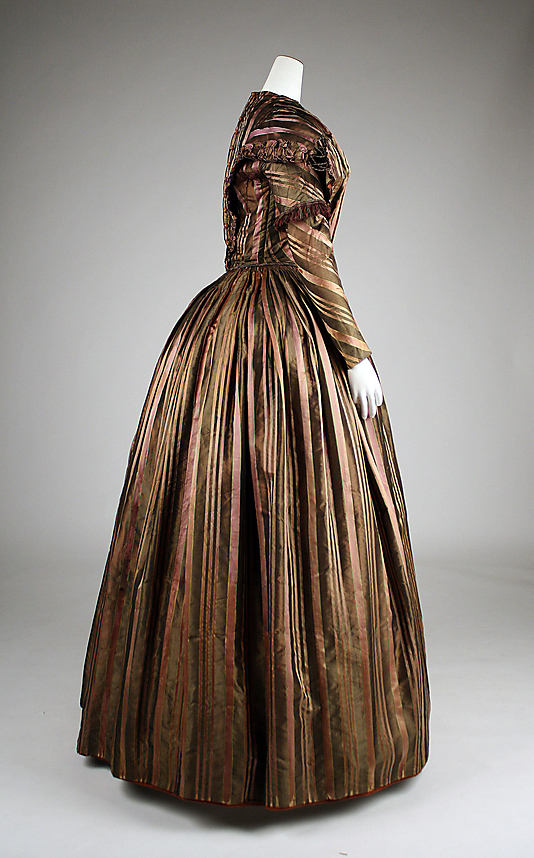
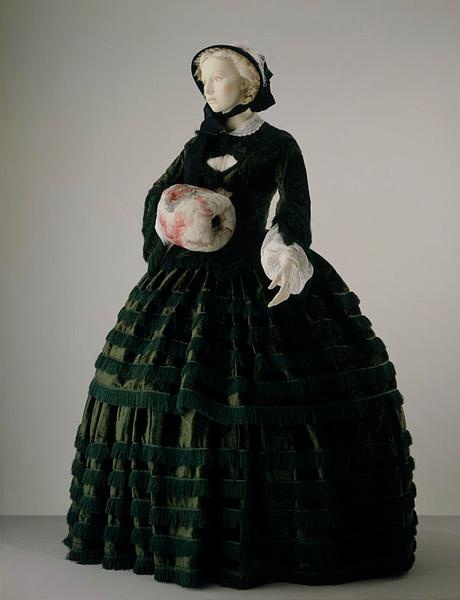
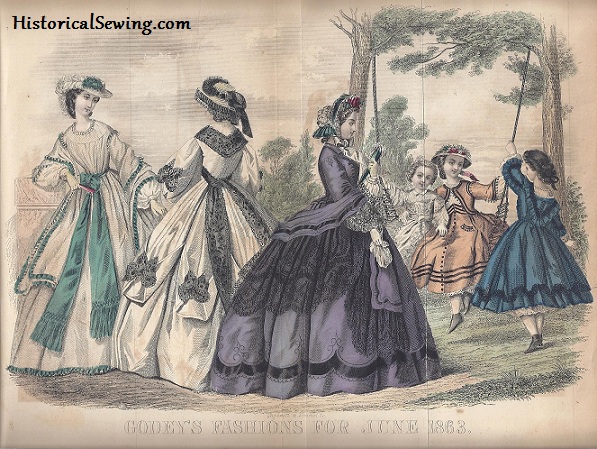
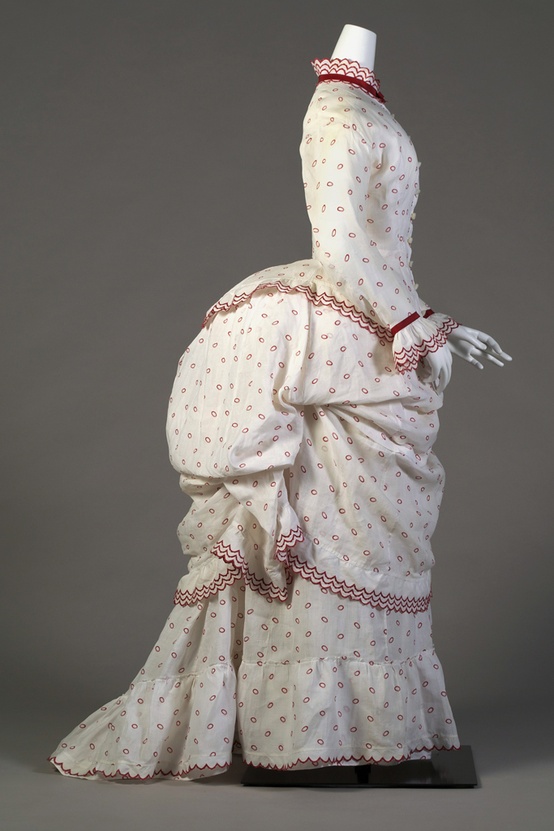
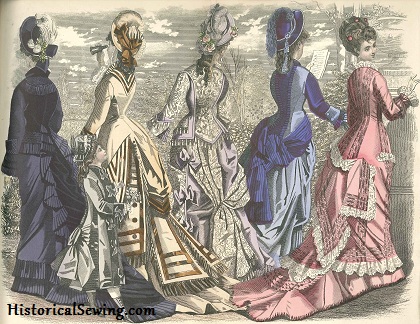

Psychologists have determined that on a very, very basic level, women are/were attracted to men who can/could be “good providers” and men are/were generally attracted to women who can/could provide them with children. Women with larger hips and butts were (perhaps unconsciously) considered “able to carry and successfully birth babies.”
Therefore, it makes perfectly good sense that down through the ages, women’s fashion has accentuated their butts and hips. All women’s undergarments were designed to appeal to men’s most primal desire; a woman who can produce heirs for him. Now before one get’s upset with these comments, understand when studying history of any sort, one must transport themselves back in time and suspend any notions of today’s applications. Consider that women were denied education and careers. Their only means of survival was through their husbands and marriage often was a “contract” between two people each getting what they wanted. Women wanted/needed to survive and men needed/wanted “sons” to survive them. Women’s fashion played a key role in making women desirable to men by making them appear larger in the butt and hip area.
Looks like they were trying to achieve a look that most of us african american women were natrually born with . Maybe they got the idea from sara baartman who was born with this exact look from the time of slavery. She was put on a display like a freak show . Years later in the 1800s these fashionable dresses are a thing …mostly to the rich
Boom
The real reason for the shape of these dresses is actually the fact that dresses that added a lot of volume on both sides of the hip were considered more and more old-fashioned and rouching and layers got really popular and trendy. However, rouching and layers alone didn’t add a lot of volume to their skirts. This was really important though since really small, tiny waists were THE beauty ideal for centuries. So to avoid looking old-fashioned but still achieve the illusion of a tiny waist they put more volume to the back of their skirts which made their hips look wider and created a good contrast to emphasize their small waists. The focus of these dresses was never a big behind nor wide hips but a small waist just as the other centuries before. Hips and butt were just a necessity the get to the actual desired look. No racial issue here.
@Lala Where is your source for this information?
Being voluptuous was actually the look of wealth for centuries, not having a small waist. Being skinny mean was seen as one being poor and unable to eat- thus a small waist.
They did get it from Sara Bartman.
Yes, I agree people were obsessed with Sara!
My same thoughts Exactly 💯 been trying to copy for centuries
Working on my thesis and came accross this. It has nothing to do with Sara Baartman… There were already dresses like that made since the early 17th century 1720-1730. If you visit a museum, doesn’t have to be specifically about fashion just that show people dressed from that era, or even look at early 17th century paintings, you can see them. Sara Baartman was born in 1789.
Umm, for those who comment on my bustle I typically respond with J-Lo, Nicki Minaj, and spanx. They actually sell under support garments with pads on the rump. Now there’s a thought.
While I appreciate what you’re saying here, you’re completely glossing over some extremely obvious information available to you regarding the fashionable shapes of the fashions of c. 1855-1865. While it’s true that when hoops were re-introduced in the mid-1850’s as the main form of skirt support they were rounder than the elliptical versions of the mid-1860’s that morphed gradually into the bustles of the late 1860’s/early 1870’s, they were by no means completely circular like a modern bridal hoop is. If you take the time to look at both period engravings as well as extant photos, even early on there is still a very pronounced “back thrust” inherent with the crinolines worn. It’s a lot more subtle than what would come later, but it’s still there. If you imagine the wearer standing inside a large circle, a modern bridal hoop would place her exactly in the center. However, an 1850’s crinoline/hoop petticoat would place her just a tad bit closer to the front of the circle, which makes for a slightly more pronounced backside. The ratio of where the wearer is in relation to the back of the circle of course increases as time passes, but it’s a feature that is consistently there in both decades that you sorta just ignored here.
I appreciate your comment. I wasn’t intending to write a lengthy description on each era of the 19th century but merely to recognize that back emphasis occurs throughout.
I know the emphasis here is on 19th century dress, but I think it’s worth mentioning that nothing emerges from a vacuum. Emphasis at the back of dresses did not begin with the Regency. It’s a direct evolution from late 18th century dress which increasingly moved fullness from the sides of the body towards the back from about 1770 onwards. From the late 1780s waistlines crept upwards, maintaining that fullness at the back of the dress.
In fact, greater fullness at the back of a dress compared with the front wasn’t new then, either. It’s been a recurrent theme throughout much of western dress history. I think this is pretty purely down to aesthetics. Our aesthetics prefer something trailing behind us rather than jutting out in front. Front emphasis looks visually unbalanced to us. Even distribution all the way around had also come and gone multiple times, but I think people honestly get bored with it. Rear fullness and trains just look more elegant overall to our way of seeing. Balanced asymmetry in art, dress, architecture, even music is often considered more sophisticated than pure symmetry. And just think about your own body’s tendencies – it’s quite uncomfortable to stand evenly on your two feet, you invariably end up resting more on one foot and then the other when standing – contraposto is/was considered an ideal pose for the human figure.
Really enjoyed this post how you went through each decade… I have always admired the gowns of this time period but never knew the names of the styles. Thanks so much for putting this together and sharing it!!
so instead of quote unquote torture devices like corsets we now have stilettos… suuuure we’ve evolved… 😉 I think I’d rather wear a corset and lower heels thanks.
It amuses me to hear that someone thinks that no one would want to wear something that “makes their butt look big,” with the prevalence of high heels in this world. The posture high heels force the female body to take for balance does, in fact, emphasis the hips and buttocks.
Of course, causing the hips and butt to jut out more, and the breasts to ride higher and further out, also makes the waist look smaller, and people LOVE that.
Yes!
Of course, if we take it for granted that there’s going to be a load of fabric in some direction, gathering it at the back is just more pratctical than the sides or front. From an aesthetical point of view, I can also see the point of more volume at the back, especially during those times when the style of corset used pushes the breasts up and forward a lot. Imagine that look with a more or less “flat” back! The women would’ve looked like they’re about to fall forward on their face any moment… There needs to be a balance, and a definite difference between the waist and hips to make “prominent breasts” look good on anyone.
I agree with the last two comments. Every woman today who despairs over her large thighs and wide bottom should thank Dr. Martin Larmont – a Victorian era marriage adviser who promoted “wide haunches” and “voluminous thighs” as being the ideal breeding qualities for a female.
From an evolutionary standpoint, there is a certain waist to hip ratio that indicates the best breeding potential. Many fashions have been attempts to fool the eye into perceiving that ratio, hence the bustle and the corset, making the waist appear smaller in relation to the hips.
From a scientific standpoint, the reason humans (females in particular) have large butts is because it shows to a potential mate that we are well-fed and healthy. It’s an honest display of fat stores. The 19th century was all about trying to look as rich and well off as you could, it makes sense that they would find anything that accentuated the hip and butt to be appealing, even if they didn’t know why.
Just goes to show that all weird evolutionary adaptions – even fashion! – link back to sex somehow.
…I know it’s late, but actually, we have large posteriors because that’s where most of the muscle mass that makes bipedal locomotion possible has to be. It’s something of a counterbalance to make sure we stay upright, too. But it’s only incidental that it shows “well-fed and healthy,” from a scientific standpoint. Sorry.